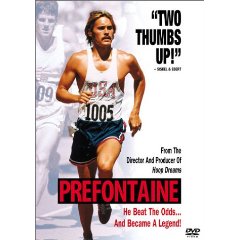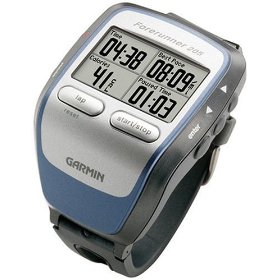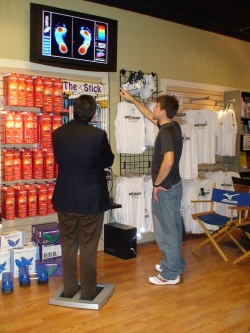Who won the Nike Women’s Marathon?
Thursday, October 23rd, 2008The Nike Women’s Marathon has been on my race wishlist for a while, but after hearing about how Nike treated the fastest runner of this year’s race I’m not as excited about my entry fees going to Nike. FitSugar writes about this Cinderella Story of the winner of the race. The fastest runner, Arien O’Connell, a fifth grade teacher from NYC blew away the competition and didn’t even know it. She completed the hilly San Francisco marathon in 2:55:11, beating her previous PR time by a whopping 12 minutes.
Unfortunately, O’Connell was not registered as an “elite” runner and did not compete in the elite’s race so originally could not be considered the winner of the race even though she had the fastest time by an 11 minute margin. O’connell surprised herself at the time she was able to run and never considered herself an elite runner, but shame on Nike for not recognizing this amazing feat because of a technicality in the rules.
Just yesterday Nike issued a press release recognizing their mistake and declaring O’Connell a winner of the Nike Women’s Marathon:
Nike is announcing today that it recognizes Arien O’Connell as a winner in last weekend’s Nike Women’s Marathon completing the full race in 2:55:11. She shattered her previous time and achieved an amazing accomplishment.
Arien will receive the same recognition and prize, including a Tiffany & Co. trophy, the full marathon elite group winner received. Arien was unfortunately not immediately recognized as a race winner because she did not start the race with the elite running group, which is required by USATF standards. Because of their earlier start time, the runners in the elite group had no knowledge of the outstanding race Arien was running and could not adjust their strategies accordingly.
Learning from the unique experience in this year’s race, Nike has decided today to eliminate the elite running group from future Nike Women’s Marathons. Next year, all runners will run in the same group and all will be eligible to win.
Nike has a proven track record of supporting athletes and we’re proud to be able to honor Arien and other athletes who surpass their goals and achieve great accomplishments.
Elite or not, O’Connell and all the other women participants did a great job finishing the women’s marathon. The finisher’s necklace by Tiffany, massages, and post-race celebration were certainly well deserved. Keep running ladies, you’re all winners in my book!


 The hare can leaves various marks showing the path of the hare, a trail split, dead ends, and short cuts. The front runners usually yell out “On-On” for the rest of the hounds when they see a hash mark indicating they’re on the right trail. A trail split, or “check”, really makes the run interesting, as there may be two or three different directions the trail may go and part of the fun is finding the hare’s correct path. The mischievous hare can make an adventurous run by leading you through urban or wooded areas, muddy
The hare can leaves various marks showing the path of the hare, a trail split, dead ends, and short cuts. The front runners usually yell out “On-On” for the rest of the hounds when they see a hash mark indicating they’re on the right trail. A trail split, or “check”, really makes the run interesting, as there may be two or three different directions the trail may go and part of the fun is finding the hare’s correct path. The mischievous hare can make an adventurous run by leading you through urban or wooded areas, muddy 
 If you’re like me you get tired of running the same route day after day. Heck, running interesting routes is the reason I skip the track and the treadmill whenever I can but sometimes it can be difficult to find new places to run. This is especially true if you generally start and end your runs in the same place most days (like your home or office). Here are some ideas for spicing up your home-base running routes:
If you’re like me you get tired of running the same route day after day. Heck, running interesting routes is the reason I skip the track and the treadmill whenever I can but sometimes it can be difficult to find new places to run. This is especially true if you generally start and end your runs in the same place most days (like your home or office). Here are some ideas for spicing up your home-base running routes: Ok, so I’m no film buff but I am a runner so I think that qualifies me to rank the best running movies that I’ve seen. So here they are, the best running movies, in order of my favorites:
Ok, so I’m no film buff but I am a runner so I think that qualifies me to rank the best running movies that I’ve seen. So here they are, the best running movies, in order of my favorites:

 On Sunday Chicago temperatures are expected to be in the mid to upper 70s. There will be 20 total aid stations plus a new Event Alert System intended to warn people of course conditions. The color-coded communication system displays green (good conditions), yellow (moderate), red (potentially dangerous), or black (extremely dangerous). Because of the warm temperatures forecasted, currently a yellow/moderate status is in effect indicating less than ideal running conditions. The
On Sunday Chicago temperatures are expected to be in the mid to upper 70s. There will be 20 total aid stations plus a new Event Alert System intended to warn people of course conditions. The color-coded communication system displays green (good conditions), yellow (moderate), red (potentially dangerous), or black (extremely dangerous). Because of the warm temperatures forecasted, currently a yellow/moderate status is in effect indicating less than ideal running conditions. The 